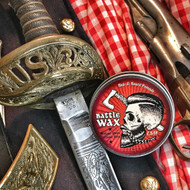To dig, or not to dig?
Posted by Ben Pisanchyn on Jul 1st 2019
Have you ever imagined finding buried treasure or historically significant artifacts in your back yard? There are many sites in the US that are overflowing with historically significant artifacts. These being old battlegrounds, mostly from the Civil War - all of which prohibit digging. The moratorium essentially guarantees that we will never know or appreciate what has been left behind as the major Civil War battlefields are now national parks. Europe arguably has the most storied dirt on earth. Some of the most important conflicts in world history have been fought there. From the Roman Empire’s Julius Caesar’s expansion into modern day England, to World War II, Europe has hosted over a hundred major wars and over a thousand major battles. That means a lot of opportunities to find relics, coins, and a plethora of other artifacts. Because so much of Europe is covered in old battlefields, it would be impossible to protect every one with a National Park designation.
Along with this huge opportunity for diggers and treasure hunters, comes numerous and ever changing laws that govern the removal and ownership of those items. Each country has their own local, state, and federal laws. One group of amateur diggers have recently descended upon Latvia searching for artifacts and remains of German and Russian soldiers as documented by a new Show currently available on Netflix called Battlefield Recovery. The show has sparked out outrage from archaeologists across the world as it has been called grave robbing and insensitive to those that have fought in the war. In Latvia, where most of the show is filmed, digging is allowed but strictly restricted. Permits must be granted for a specific site and all artifacts found must by turned over to a Latvian museum with no compensation given to the finder. While those rules are followed in the show, the digging is done clumsily and unprofessionally. Multiple times they employ a backhoe to dig up human remains.
There are specific practices that should be followed when digging at these times of sensitive sites. An archeologist would grid off the entire area planned for digging with one meter squares with each separate square being labeled. Instead of a backhoe and shovels, proper tools consist of nothing more than plastic trowels, screwdrivers, and straw brushes. This allows every artifact found to be catalogued on which square it was found and prevents damage to items. A site that took the Battlefield Recovery team a few hours to dig should have taken a team of archeologists 1-2 months to fully uncover. While uncovering badges, weapons, uniforms, personal items, and even human remains is important to remembering the cost of the world wars, it should be done respectfully.
- Ben Pisanchyn

